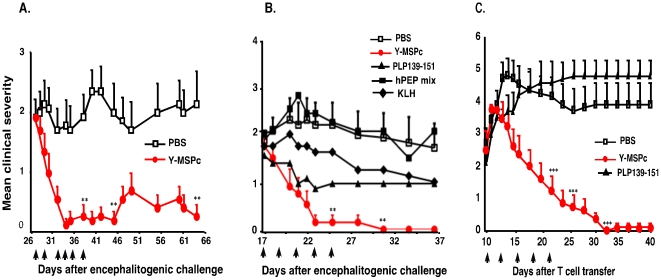Figure 6. Treatment with Y-MSPc is more effective than peptide(s) in reversing ongoing “classical” EAE actively or passively induced by PLP139-151.
BSF1 mice were immunized with phPLP139-151/CFA or were infused with syngeneic encephalitogenic PLP139-151-specific line T cells (2×106 per mouse) for the development of actively or passively induced chronic EAE, respectively. (A), The therapeutic effect of Y-MSPc on chronic EAE is long lasting. On day 27 after immunization, mice with established chronic EAE (about two weeks after disease onset) were grouped (with equal mean clinical score of ∼2/group; n = 7 mice/group) and treated on days indicated by arrows by i.v. injections of Y-MSPc (75 µg in 0.5 ml PBS) or PBS alone. (B), Reversal by Y-MSPc vs. phPLP139-151 or huPEP mix of actively induced ongoing EAE. On day 17 after immunization, mice with ongoing EAE (about a week after disease onset) were grouped (with equal mean clinical score of ∼2/group; n = 7 mice/group) and treated on days indicated by arrows by i.v. injections of Y-MSPc (75 µg), phPLP139-151 (100 µg), huPEP mix (7 peptides as in Fig. 4; total 140 µg), KLH (75 µg), or PBS. (C), Reversal by Y-MSPc vs. phPLP139-151 of passively induced ongoing EAE. On day 10 after transfer, mice with ongoing EAE (4 days after onset) were treated by i.v. injections with 50 µg of PLP139-151, 75 µg of Y-MSPc, or PBS alone (n = 6 per group). Results are shown as mean clinical score +/−SE. **, p<0.005; ***, p<0.0005 compared to PBS control group; two tailed Student's t-test. P = 0.1 (n.s.) for the KLH treatment group, compared to PBS, for days 28 and 31.

